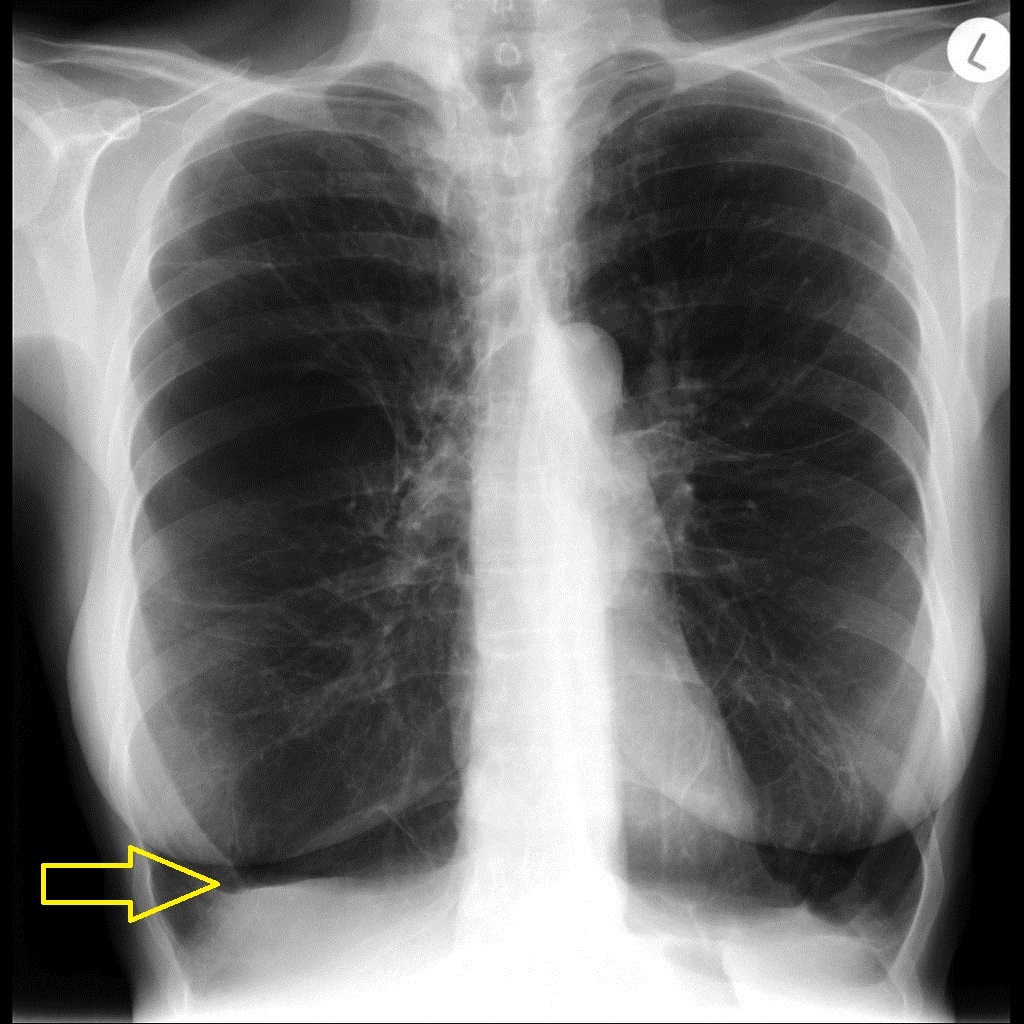Alpha 1-antitrypsin deficiency x ray
|
Alpha 1-antitrypsin deficiency Microchapters |
|
Differentiating Alpha 1-antitrypsin deficiency from other Diseases |
|---|
|
Diagnosis |
|
Treatment |
|
Case Studies |
|
Alpha 1-antitrypsin deficiency x ray On the Web |
|
American Roentgen Ray Society Images of Alpha 1-antitrypsin deficiency x ray |
|
Directions to Hospitals Treating Alpha 1-antitrypsin deficiency |
|
Risk calculators and risk factors for Alpha 1-antitrypsin deficiency x ray |
Editor-In-Chief: C. Michael Gibson, M.S., M.D. [1]; Associate Editor(s)-in-Chief: Mazia Fatima, MBBS [2]
Please help WikiDoc by adding content here. It's easy! Click here to learn about editing.
Overview
On chest X-ray alpha1-antitrypsin deficiency (AATD) emphysema presents as a hyperlucent appearance because healthy tissue has been destroyed. Affected regions also are described as oligemic because they lack the normal rich pattern of branching blood vessels. An unusual characteristic in alpha1-antitrypsin deficiency is found in about 60% of PiZZ patients is the striking basilar distribution. In contrast, cigarette smoking is associated with more severe apical disease.
X Ray
On chest X-ray alpha1-antitrypsin deficiency (AATD) emphysema presents as:[1][2]
- Hyperlucency as healthy lung tissue has been destroyed.
- Oligemic areas due to the lack of normal rich pattern of branching blood vessels.
- A characteristic in alpha1-antitrypsin deficiency is found in about 60% of PiZZ is that emphysema is confined to the basilar portion of the lung.
- In contrast, smoking is associated with more severe apical distribution of emphysema.

References
- ↑ King MA, Stone JA, Diaz PT, Mueller CF, Becker WJ, Gadek JE (1996). "Alpha 1-antitrypsin deficiency: evaluation of bronchiectasis with CT". Radiology. 199 (1): 137–41. doi:10.1148/radiology.199.1.8633137. PMID 8633137.
- ↑ Parr DG, Stoel BC, Stolk J, Stockley RA (2004). "Pattern of emphysema distribution in alpha1-antitrypsin deficiency influences lung function impairment". Am. J. Respir. Crit. Care Med. 170 (11): 1172–8. doi:10.1164/rccm.200406-761OC. PMID 15306534.